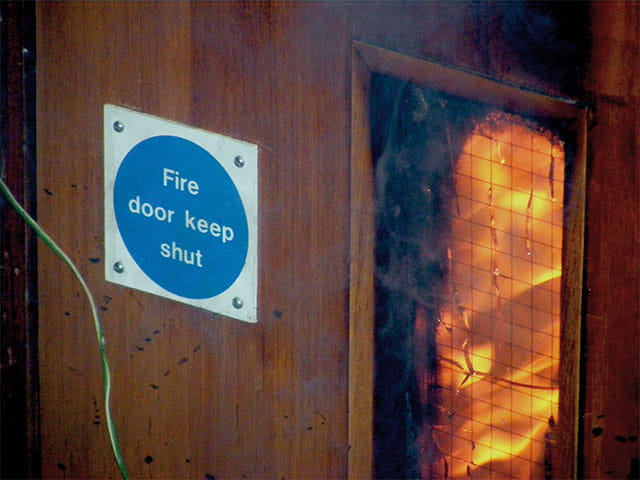Don’t take a risk when it comes to Fire Risk Management
There is a lot to consider when it comes to Fire Risk Management. Dr Jim Marsden at Warringtonfire explains why risk assessments and structure should be top of the list.
When it comes to fire risk management, one of the biggest dangers is the difference between perception and reality.
Fire strategies can be in place and boxes ticked, but if those who implement the system do not fully understand the implications or think about every potential risk, people and property may not be safe. In the event of a fire, any gap between perception and reality can be catastrophic.
These grey areas really highlight the benefit of a formalised system, such as BS 9997, which is certification to the standard offered by our sister company BM TRADA. A standardized approach ensures nothing is missed, and that the Fire Risk Management System is reliable and safe. It also reminds us that the most important element of the Fire Risk Management System is the fire risk assessment.
Fire Risk Assessment
The fire risk assessment forms the foundation stone of the Fire Safety Management System. It drives what the Fire Risk Management System will include and how it works. It identifies any weaknesses and ensures compliance with the Fire Safety Order, as well as considering business continuity and property protection.
This assessment affects every part of the System – from building design to who is the Responsible Person of the occupied building, and what ongoing management strategies should be in place.
As it is such a critical part of the Fire Risk Management process, choosing a risk assessor should not be taken lightly. Things to consider include:
- How well do you know them?
- Were they chosen based on cost or reputation?
- Have they been third party assessed?
- What levels of professional indemnity do they have?
Fire Risk Assessor Certification Scheme (FRACS)
One way to judge whether a risk assessor can be relied upon, is through the Fire Risk Assessor Certification Scheme (FRACS). This is one of the schemes that tests the competency of a risk assessor, offering third party assurance that they have been tested, monitored and certified.
For organizations wanting to carefully choose an assessor, using a third party certified fire risk assessor provides assurance that the assessment has been undertaken by a competent person. Both individual and company registration schemes are available for FRACS, with both following a similar pattern:
- The assessor must meet technical assessment criteria. This includes a review of completed fire risk assessments; participation and testing in planned exercises and scenarios; and a technical interview
- Surveillance every two years
- Re-certification every four years, with ongoing CPD required
Once assessors have been certified to FRACS, their names and details go on a public register on warringtonfire.com. You can see registered companies here and registered individuals here.
The risk assessment is such a critical part of the Fire Safety Management System, it’s important that organizations feel confident that it has been completed properly.
Where does BS 9997 fit into the Fire Risk Management System?
As a formalized system, BS 9997 provides a structure for managing fire risk in a holistic way. It provides a systemic and repeatable set of procedures, which makes the process much more straight-forward.
Crucially, BS 9997 guarantees clear, top-down leadership when it comes to fire management. Rather than acting as a ‘tick box’ exercise, BS 9997 demands continual improvement and buy-in from the senior management team, which prioritizes fire safety and permeates this focus across all levels. All employees are expected to understand and follow the policies and procedures, and everyone understands their role and where they fit when it comes to fire safety. This leads to a much more risk-aware team and a much safer environment for all, with fire safety embedded into the culture of the organization.
BS 9997 is a clear badge demonstrating a commitment to fire safety and providing reassurance of quality. It also makes fire compliance much easier, as it becomes part of the business’ processes.
It is also helps to ensure that legislative requirements are met; that changes are correctly assessed to avoid unnecessary costs; and demonstrates a commitment towards fire safety to all stakeholders. And, as it is accepted across multiple industries, it can improve the procurement process, saving time, effort and money.
If you have any questions about fire risk management, including more detail on FRACS and BS 9997, please get in touch.
Find related Resources
